
Welcome to our comprehensive guide on pendant light sizing! Choosing the right size is crucial for functionality and aesthetics. Learn how to select the perfect size, style, and placement to enhance your space with expert tips and practical advice.
Importance of Pendant Light Sizing
Proper pendant light sizing is essential for balancing functionality and aesthetics. Incorrect sizing can overwhelm or underwhelm a space, affecting its ambiance and usability. A well-sized pendant enhances lighting efficiency, creating a harmonious environment. It also impacts room perception, with correct sizing making spaces feel larger or cozier. Additionally, appropriate sizing ensures task and ambient lighting needs are met, avoiding glare or insufficient illumination. By selecting the right size, you achieve a balanced, visually appealing setup that complements your decor and improves functionality.
Overview of Pendant Light Styles and Finishes
Pendant lights come in a wide variety of styles and finishes, offering versatility for any interior. From sleek, modern designs with glass or metal shades to rustic, vintage-inspired fixtures, there’s a pendant to suit every decor. Finishes like chrome, brass, bronze, and matte options provide flexibility to match existing aesthetics. Additionally, sizes range from compact mini pendants to large, statement-making fixtures. This diversity ensures you can find the perfect light to enhance your space, whether it’s a subtle accent or a bold focal point.

Key Factors Influencing Pendant Light Size
Room size, ceiling height, and lighting coverage are key factors. Decorative style and functionality also influence size and placement for harmony, balance, and practicality.
Room Size and Proportions
Room size and proportions play a significant role in determining the ideal pendant light size. Larger rooms can accommodate bigger fixtures, while smaller spaces require more delicate designs. Measure the room’s dimensions to ensure the pendant’s scale complements the area. For instance, a 12-inch diameter pendant works well in medium-sized rooms, while larger spaces may need fixtures up to 36 inches or more. The 2:1 ratio of ceiling height to pendant diameter is a helpful guideline. Additionally, consider the number of lights and their spacing to maintain balance and harmony in the space. Proper sizing enhances both functionality and aesthetics, creating a cohesive design that aligns with the room’s proportions and style.
Ceiling Height and Lighting Coverage
Ceiling height and lighting coverage are crucial factors in selecting pendant lights. Taller ceilings allow for larger fixtures, while lower ceilings require smaller, sleeker designs. Pendant lights should hang 30-36 inches above surfaces like tables or islands for optimal coverage. For general lighting, ensure the fixture’s spread matches the room’s needs. In open spaces, consider the light’s reach to avoid dark spots. Properly balancing ceiling height with lighting coverage ensures even illumination and visual harmony, making your space both functional and inviting while maintaining aesthetic appeal and comfort.
Decorative Style and Functional Needs
Your decorative style and functional needs should guide pendant light selection. Modern spaces often favor sleek, minimalist designs, while traditional settings benefit from ornate fixtures. Consider the light’s purpose: task lighting for focused areas or ambient lighting for overall illumination. Choose materials and finishes that align with your interior design, such as glass for a airy feel or metal for industrial aesthetics. Balancing style and function ensures your pendant lights enhance both the look and usability of your space, creating a cohesive and inviting atmosphere.
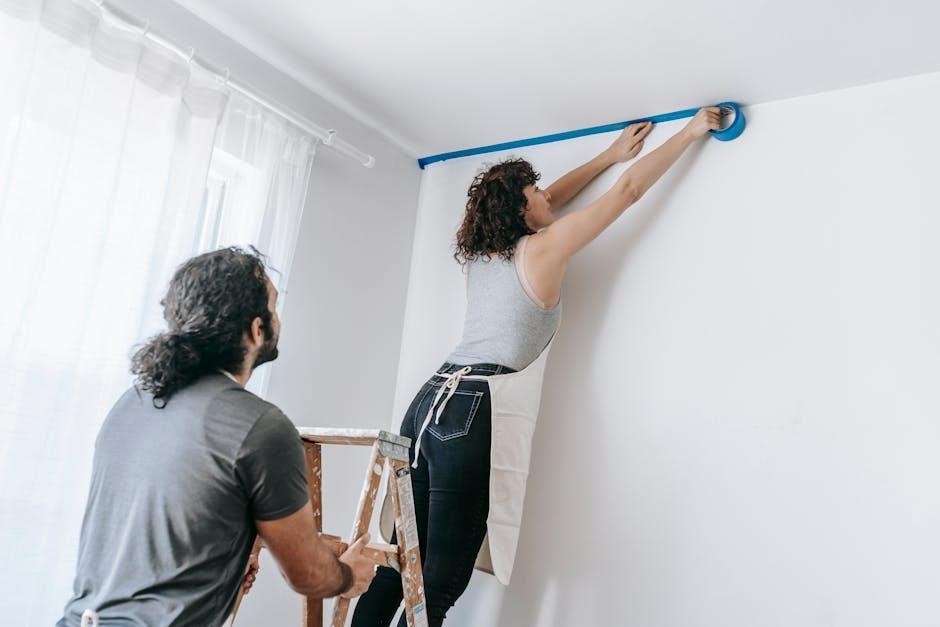
Understanding Pendant Light Placement
Proper pendant light placement is key to enhancing functionality and aesthetics. Consider room size, ceiling height, and lighting purpose to create a balanced, visually appealing arrangement that suits your space.
Kitchen Island Pendant Lighting
When selecting pendant lights for your kitchen island, consider size, placement, and spacing for optimal functionality and style. Pendant lights should be hung 28-34 inches above the island surface to ensure visibility and task lighting. The size of the pendant should be proportional to the island’s width, typically 1/2 to 2/3 of the surface below. For multiple pendants, space them evenly, ideally 30 inches apart, to create a balanced look. Aim for 2-3 pendants, depending on the island’s length, to achieve a harmonious and functional lighting arrangement.
Dining Table Pendant Lighting
For dining tables, pendant lights should complement the table’s size and style while providing ambient or task lighting. The pendant’s diameter should be 2/3 to 3/4 of the table’s width for proportionate sizing. Hang pendants 30-36 inches above the tabletop, measured from the light’s lowest point. For rectangular tables, use two pendants spaced evenly, while round tables often feature a single, larger fixture; Ensure the lighting doesn’t obstruct conversations or views, creating a balanced and inviting dining atmosphere.
Stairwell and Hallway Pendant Lighting
Pendant lights in stairwells and hallways should be scaled to the space while ensuring safety and visibility. Fixtures should be at least 7 feet above the floor to prevent obstruction. Slim designs work well for narrow hallways, while larger pendants can make a statement in grand staircases. Spacing should maintain even lighting distribution, typically 8-10 feet apart. Choose styles that align with the room’s decor, ensuring both functionality and aesthetic appeal without compromising the flow of the area.
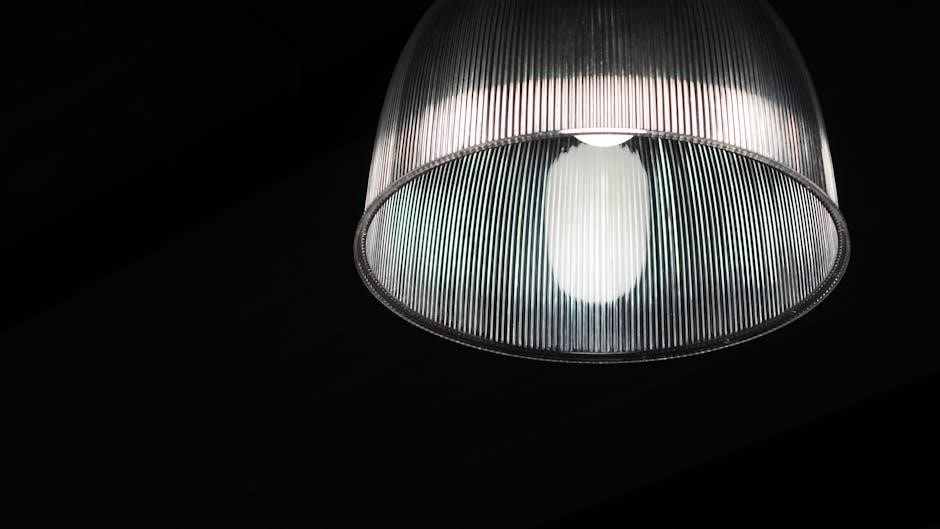
Choosing the Right Pendant Light Style
Selecting the perfect pendant light style enhances your space’s decor. Consider materials like glass, metal, or wood, and finishes such as bronze, chrome, or matte. Modern, minimalist, or traditional designs can suit various interiors, ensuring both aesthetic appeal and functionality.
Material and Finish Options
Pendant lights come in a variety of materials, including glass, metal, wood, and acrylic, each offering unique aesthetic and functional benefits. Glass pendants provide soft diffusion, while metal options like brass or chrome add sleekness. Wood and rattan bring warmth, ideal for rustic or coastal styles. Finishes range from polished nickel to matte black, allowing you to match your interior decor. Consider durability and maintenance needs when selecting materials. Pairing the right material with a complementary finish ensures a cohesive look tailored to your space’s ambiance and functional requirements.
Task Lighting vs. Ambient Lighting
Pendant lights can serve as either task or ambient lighting. Task lighting provides focused illumination for specific areas, like kitchen islands or reading nooks, often requiring brighter, more directed light. Ambient lighting, however, creates a soft, overall glow to set the room’s mood. The choice depends on your space’s needs. For task lighting, opt for pendants with adjustable arms or narrower shades. For ambient lighting, consider wider, diffused shades. Balancing these options ensures both functionality and aesthetics, tailored to your room’s purpose and design. Proper selection enhances usability and visual appeal.

Number and Spacing of Pendant Lights
Pendant lights are often used in pairs or triplets for balanced lighting. Space them 30-36 inches apart for optimal coverage and visual harmony in any room.
How Many Pendant Lights to Use
The number of pendant lights depends on the space and desired effect. For kitchen islands, 2-3 pendants are common, spaced 30-36 inches apart. In dining areas, use 1-2 pendants based on table size. For stairwells or hallways, a single large pendant or multiple smaller ones can enhance ambiance. Consider the room’s proportions and lighting needs to avoid overcrowding. Consider the surface width below: pendants should be 1/2 to 2/3 the width of the surface for balance and harmony in any setting.
Spacing Between Multiple Pendant Lights
Spacing between pendant lights is crucial for balance and visual harmony. A general rule is to space them 30-36 inches apart, ensuring even distribution. For larger pendants, spacing can be double the width of the fixture. Over kitchen islands, pendants should be evenly spaced, while dining tables may require centered placement. Proper spacing enhances functionality and aesthetics, preventing overcrowding. Measure carefully to achieve a cohesive look that complements the room’s proportions and lighting needs.
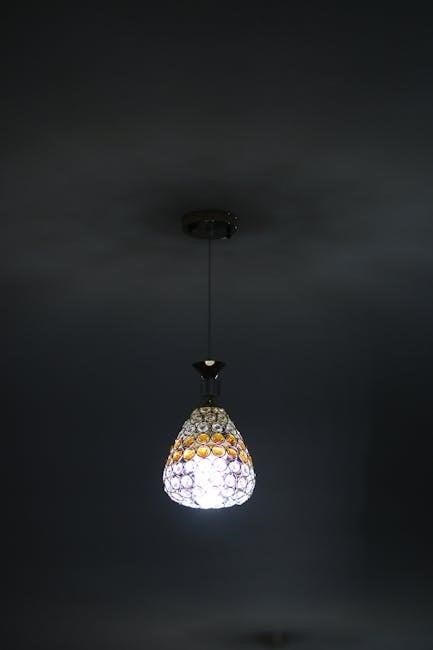
Pendant Light Height Recommendations
Pendant lights should be hung 30-36 inches above dining tables and 28-34 inches over kitchen islands. Adjust heights based on ceiling height and room functionality for optimal lighting.
Standard Hanging Heights for Different Rooms
Standard hanging heights vary by room type. Dining areas typically range from 30-36 inches above the table, while kitchen islands are often 28-34 inches. Bedrooms and living spaces may use slightly lower heights for ambiance, around 30-36 inches. Entryways and hallways often require higher placement, such as 7 feet above the floor. These guidelines ensure optimal lighting and safety, but adjustments may be needed based on ceiling height and specific room requirements.
Adjusting Height for Specific Spaces
Adjusting pendant light height ensures functionality and aesthetics in specific spaces. For staircases, hang lights slightly lower (28-30 inches) to avoid obstructing views. In rooms with high ceilings, increase height to 40 inches or more for proportional lighting. Task-oriented areas, like reading nooks, may benefit from lower placement (20-24 inches) for focused illumination. Always consider the room’s purpose and ceiling height when tailoring pendant light placement to create a balanced and visually appealing environment.
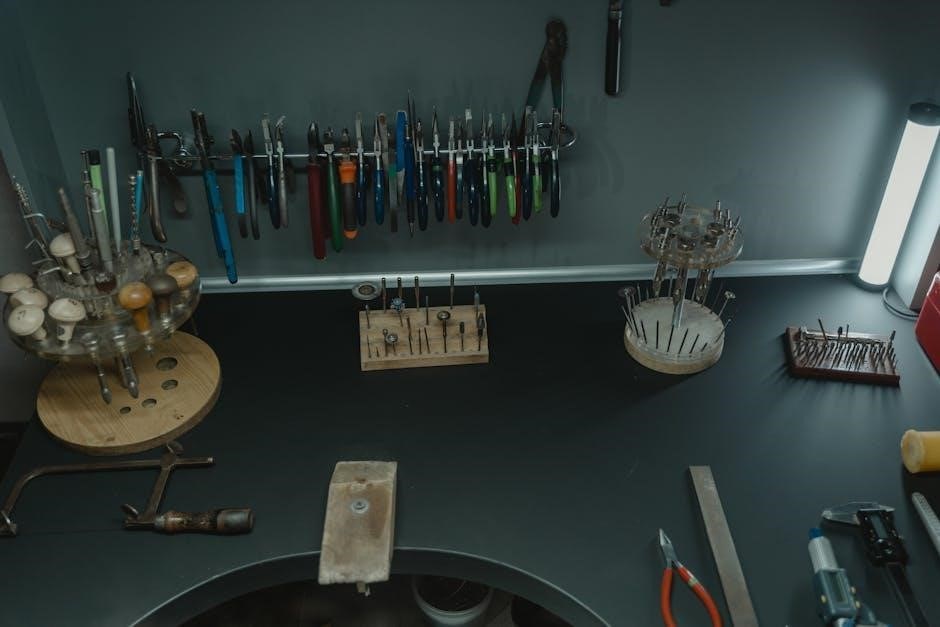
The Impact of Pendant Light Sizing on Room Perception
Pendant light sizing significantly influences room perception. Properly scaled fixtures can make spaces feel larger or cozier, enhancing ambiance and functionality.
How Size Affects Perceived Space
Pendant light size plays a significant role in shaping room perception. Larger fixtures can dominate smaller spaces, while oversized lights may overwhelm. Conversely, smaller pendants create a sense of openness. Properly scaled lighting enhances balance and harmony, making rooms feel more proportionate. For small spaces, petite pendants avoid clutter, while in larger areas, statement pieces add drama. The size of the pendant should complement the room’s dimensions, ensuring functionality and visual appeal. Correct sizing can make a room feel up to 30% larger when done right, enhancing both aesthetics and usability.
Maximizing Space with Proper Sizing
Proper pendant light sizing is key to maximizing space. In smaller rooms, opting for sleek, compact designs prevents visual clutter, while larger spaces can accommodate bold, statement fixtures. The right size ensures lighting is functional without overwhelming the area. For example, in kitchens, pendants should be 28-34 inches above islands to maintain workflow. In dining areas, sizing the light to 2/3 of the table width creates balance. Strategic sizing enhances usability and aesthetics, making rooms feel more spacious and well-designed.

Pendant Light Size Chart and Measurement Guide
A size chart and measurement guide are essential for selecting pendant lights. Measure room dimensions, fixture proportions, and desired illumination area. Practical tips ensure the perfect fit.
Using a Pendant Light Size Chart
A pendant light size chart simplifies the selection process by providing standardized measurements. It ensures fixtures proportionally fit the space, considering room dimensions and fixture width. For multiple pendants, spacing is calculated as twice the pendant’s width. For example, a 15-inch pendant should be spaced 30 inches apart. This guide helps balance functionality and aesthetics, preventing overcrowding while ensuring even lighting distribution. Referencing a chart guarantees a harmonious design tailored to your room’s specific needs.
Measuring for Installation
Measuring your space is essential for proper pendant light installation. Start by determining the room’s dimensions, ceiling height, and the surface below the fixture. For kitchen islands or dining tables, measure the length and width to decide pendant placement. Ensure the fixture’s size complements the area, maintaining a balance between design and functionality. Use a tape measure to mark mounting points accurately, ensuring even spacing for multiple lights. This step guarantees a flawless installation and optimal lighting coverage tailored to your space.
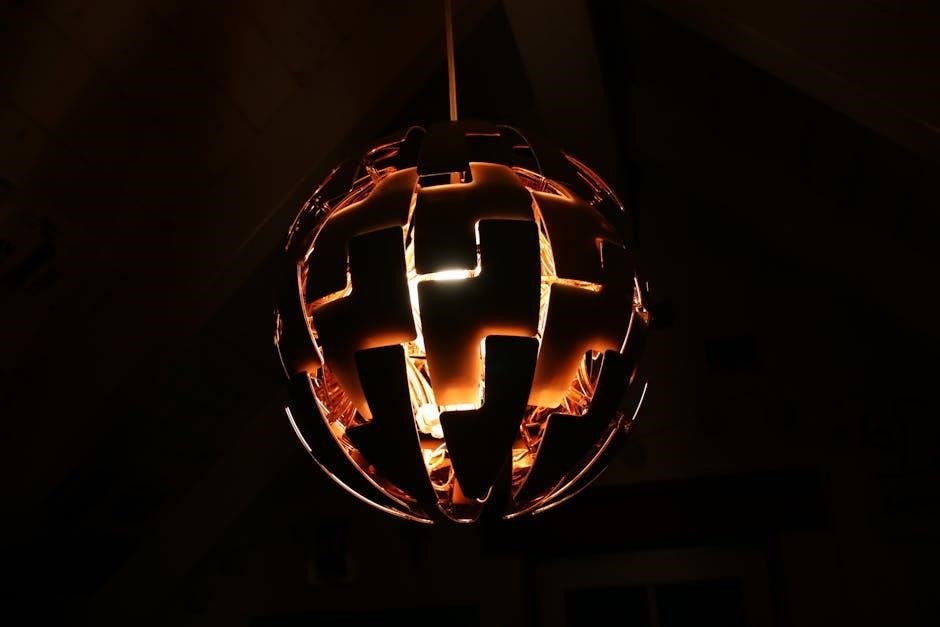
Special Considerations for Small and Large Rooms
For small rooms, opt for compact pendant lights to avoid overwhelming the space. In large rooms, statement pieces or multiple pendants can enhance ambiance. Consider room proportions, ensuring fixtures are proportional to the area. Small spaces benefit from sleek, minimalist designs, while larger areas can accommodate bold styles. Always balance size and quantity to maintain visual harmony, ensuring functionality and aesthetics align perfectly for any room size.
Pendant Lighting for Small Spaces
In small spaces, pendant lights should be compact to avoid overwhelming the room. Opt for smaller diameters, typically between 5 to 10 inches, to maintain a sense of openness. Sleek, minimalist designs like mini globe pendants or slim profiles work well. Consider mounting heights around 30-36 inches above surfaces to keep the area feeling airy. For functionality, use a single pendant for focused lighting or a pair for balanced ambiance. Always ensure the size and style align with the room’s proportions to enhance, not encroach, the space. Proper sizing can even make small rooms feel larger.
Pendant Lighting for Large Spaces
In large spaces, pendant lights can make a bold statement while providing ample lighting. Choose larger fixtures, often 20 inches or more in diameter, to fill the area without appearing lost. Linear or multi-pendant installations are ideal for covering expansive rooms. Consider energy-efficient LED options for bright, even illumination. Hanging heights should be adjusted based on ceiling height, typically 36 inches above surfaces for optimal coverage. Ensure the pendant’s scale complements the room’s proportions to create a balanced, visually appealing environment. Proper sizing enhances functionality and aesthetics in expansive areas.

Practical Tips for Pendant Light Installation
Measure carefully, turn off power, and secure fixtures firmly. Use a level and tape measure for precise placement. Test the light after installation to ensure proper functionality and alignment.
Tools and Materials Needed
For a successful pendant light installation, gather essential tools: a voltage tester, screwdrivers, ladder, level, tape measure, wire strippers, pliers, and a drill. Materials include anchors, screws, wire connectors, and junction boxes. Ensure all components are compatible with your fixture. Safety first—always turn off power before starting. Measure carefully to align fixtures properly. Use a level for even hanging and secure all connections to avoid hazards. Double-check your wiring and test the light before finalizing the installation.
Step-by-Step Installation Advice
Start by turning off the power at the circuit breaker. Remove the old fixture if applicable. Install the mounting hardware securely into the ceiling. Attach the pendant light, ensuring all wires are properly connected using wire connectors. Adjust the length of the pendant to your desired height. Tighten all screws and test the light. For multiple pendants, align them evenly and maintain consistent spacing. Follow the manufacturer’s instructions for specific models and double-check all connections for safety. Ensure the fixture is level and secure before restoring power.
Maintenance and Care for Pendant Lights
Regularly dust pendant lights with a soft cloth to maintain brightness. Avoid harsh chemicals and polish metal finishes gently. Replace bulbs as needed to ensure optimal lighting.
Cleaning and Dusting Tips
Regular maintenance ensures pendant lights remain bright and elegant. Dust fixtures monthly with a soft, dry cloth to prevent dirt buildup. For glass or fabric shades, use a damp cloth gently. Avoid harsh chemicals or abrasive materials that might damage finishes. Polish metal surfaces with a mild metal cleaner. Remove bulbs before cleaning to prevent moisture damage. For intricate designs, use a small, soft-bristled brush to reach tight spaces. Clean switches and sockets to maintain proper electrical function. Regular care extends the lifespan and preserves the aesthetic appeal of your pendant lights.
Replacing Bulbs and Fixtures
Replacing bulbs and fixtures in pendant lights is essential for maintaining their functionality and aesthetic appeal. Always turn off the power at the circuit breaker before starting. Use a replacement bulb with the same wattage and voltage rating as specified. For fixtures, ensure compatibility with the existing system. Clean the area before installing new bulbs or fixtures to prevent dust interference. Handle glass or delicate parts with care to avoid breakage. If unsure, consult a professional for safe and proper installation. Regular replacements keep your pendant lights shining brightly and efficiently.
Concluding our guide, proper pendant light sizing enhances functionality and aesthetics. By considering room size, placement, and style, you can create a harmonious and well-lit space that reflects your unique taste.
The key to selecting pendant lights lies in balancing proportions, functionality, and aesthetics. Measure the space to ensure lights are 1/2 to 2/3 the width of the surface below. For multiple pendants, maintain 30 inches between each fixture. Hanging heights vary by room: 28-34 inches above kitchen islands or dining tables, and 30-36 inches in other areas. Proper sizing can make a room feel up to 30% larger. Always consider the room’s purpose and lighting needs when choosing sizes and placements.
Final Tips for Choosing the Perfect Pendant Light
When selecting pendant lights, prioritize functionality, style, and proportions. Consider the room’s dimensions, ceiling height, and intended use. For small spaces, opt for sleek designs, while larger rooms can accommodate statement pieces. Ensure spacing between lights is balanced, typically 30 inches apart. Hang pendants 28-34 inches above surfaces for optimal lighting. Reflect on personal style and decor to make a cohesive choice. With careful planning, pendant lights can elevate your space, creating a harmonious blend of form and function.